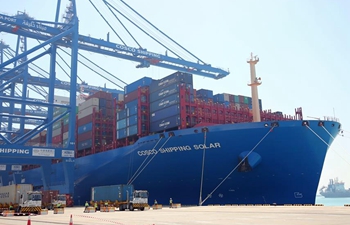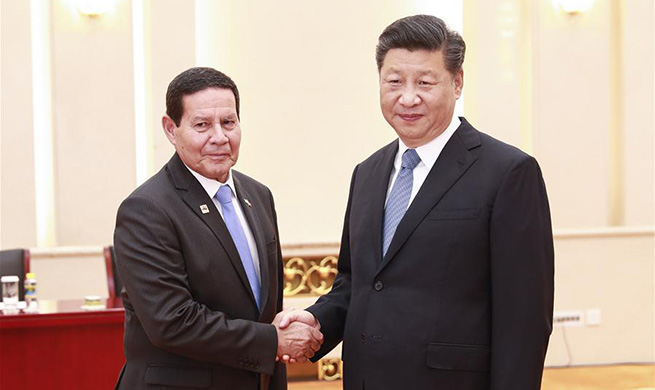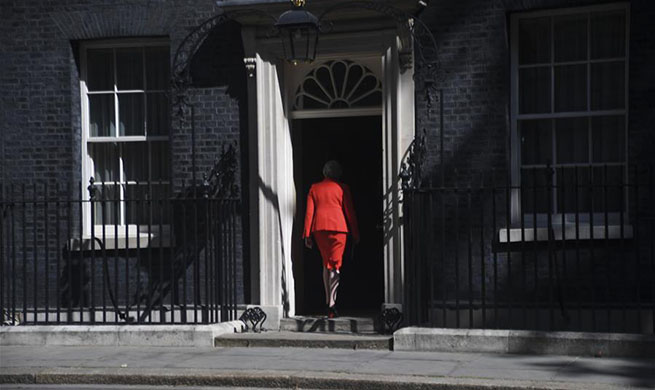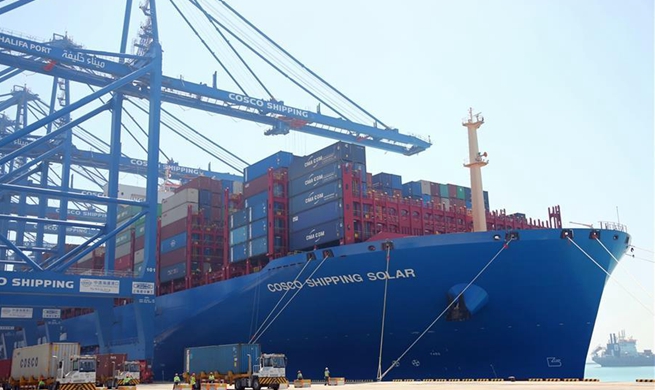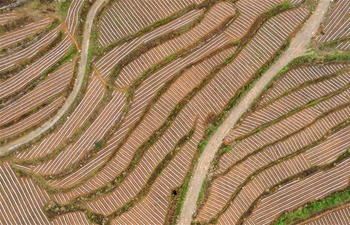By Misbah Saba Malik
ISLAMABAD, May 26 (Xinhua) -- China is investing 62 billion U.S. dollars in Pakistan through the China-Pakistan Economic Corridor (CPEC) as part of its Belt and Road initiative, which the Pakistani government and public believe as a game-changer for the country's destiny and senior government officials frequently speak highly of at local and international fora.
During the last five years since its advent in Pakistan, CPEC has enabled Pakistan to avert its energy crisis, besides building an elaborate network of roads and other infrastructure in its various parts. With increasing energy and diminishing distances, not only the lifestyle of people has changed, but economic activity also got a phenomenal boost.
With rapid progress being made in Pakistan through CPEC, several inimical voices started terming the multi-billion dollar project as a "debt-trap" for Pakistan, which will prove a back-breaking burden on Pakistan's economy.
Negating the misleading comments, Noor Ahmed, secretary of the Economic Affairs Division of Pakistan, told Xinhua that Pakistan's total foreign debt is about 106 billion U.S. dollars and Chinese loan accounts for a mere 10 to 11 percent of the total foreign debt, whereas the remaining 89-90 percent is from other sources IMF, Paris Club, and other western organizations.
"China has remained great support for Pakistan and always came to its rescue during the tough economic crisis. Though CPEC, China is building infrastructure in Pakistan to save its economy and to build its infrastructure, some of the money coming in the country is purely an investment, some are an interest-free loan, and other is on very easy and simple terms. If China lends money to Pakistan at one of the lowest interest rates in the world, how can it be a debt-trap?"
China has provided loans to Pakistan, and at the same time invested in Pakistan, and has planned to invest more in the next phase of CPEC, a win-win situation for both as with peace and economic stability in Pakistan, China will also benefit, he added.
Clapping back at CPEC critics, Pakistan's ministry of planning development and reform said in a statement last year that China stepped forward to support Pakistan's development at a time when foreign investment had dried up, and economic activities were being crippled by energy shortages and infrastructure gaps.
"CPEC-related government loans have an interest rate of only 2 percent and a repayment period of 20-25 years, and repayment of debt will begin in 2021. CPEC is not imposing any immediate burden with respect to loans repayment and energy sector outflows. All debt related outflows will be outweighed by the resultant benefits of the investments to the Pakistan economy," the statement read.
Referring to China's developmental project, the statement added that the infrastructure sector is being developed through interest-free or government concessional loans. Pakistan's Gwadar Port is a grant-based investment, which means the government of Pakistan does not have to pay back the investment amount for the development of the port.
In a talk with Xinhua, Syed Hassan Javed, director of Chinese Studies Centre, School of Social Sciences and Humanities at National University of Science and Technology, said that China has helped Pakistan a lot during the last 10 months by lending it money to save it from debt distress by enabling it to stabilize its foreign exchange reserves.
"Pakistan is so badly entangled in western debt-trap that it has to get a new loan to repay previous loans to them. By investing in Pakistan, China is enabling the Pakistani economy to stand on its feet and get out of the debt trap of western organizations."
Unlike Western loan with a high interest rate and with other painful conditions and even global power politics, Chinese loans are fairly concessional, devoid of any arm-twisting for the uplift of the Pakistani economy, he said.
Before CPEC, Pakistan was facing the worst energy crisis of its history. The project's early harvest phase has enabled Pakistan to avert the energy crisis by electricity generation from the country's very own resources including coal and solar energy.
According to the country's ministry of planning development and reform, Pakistan's existing energy mix is highly dependent on expensive fuels, like oil and gas, instead of coal and hydro generation. The country's 41 percent energy generation is dependent on expensive imported fuels, exerting a strain on the balance of payments.
Pakistani Prime Minister Imran Khan also said in a recent statement that dependence on imported fuels will be brought down from 41 percent to 30 percent in five years and less than 20 percent in 10 years using hydel, renewables and local fuels like coal from Tharparkar district in Sindh province, which is operating under the umbrella of CPEC.
"Through CPEC, Pakistan is utilizing its own natural resources to generate electricity which will gradually reduce the country's dependency on imported fuels. Foreign elements are not happy with Pakistan's increasing dependency on local resources through CPEC as it will result in the country's decreasing import of expensive fuels, hence releasing its strain on the balance of payment, and helping it to get out of their debt trap. CPEC is an emerging reality, critics cannot undo it," Javed said.
In a recent talk with Xinhua, Muhammad Muzammil Zia, policy head of job growth and human resource development in CPEC Centre of Excellence, an Islamabad-based think-tank, also said that that CPEC has created 70,000 direct jobs in Pakistan and is likely to create 1.2 million more jobs under its presently agreed projects, which will help poverty eradication in Pakistan.
Not only local, but foreign rating and economic organizations also see CPEC is a great benefit for Pakistan, rather than a debt trap. World's leading rating agency Moody's said that ongoing implementation of CPEC projects is likely to contribute 9 to 10 percent of Pakistan's GDP in the fiscal year 2018-2019.
Another international audit, consulting, advisory, and tax services agency Deloitte said that CPEC would add up to 2.5 percentage points to the country's growth rate.








